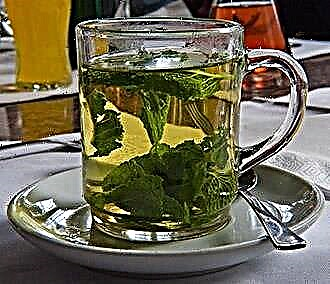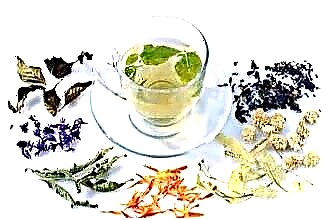A child's body is more vulnerable than an adult's body - functional systems, including the immune one, are not yet fully formed at an early age. The imperfection of protective mechanisms requires care when prescribing therapy, full-fledged conduct and completion of treatment courses for infectious diseases - especially when it comes to antibacterial drugs. Unfortunately, acute and chronic inflammatory processes with localization of lesions in the oropharynx are not so rare in children. If a child has white plugs in his throat, it should be suspected that there is a focus of inflammation that has existed for a fairly long time. You cannot do without treatment, therefore it is important to figure out what to apply and how to remove pus.
Rationale for therapy
 The appearance of plugs in the throat in children requires adequate therapy, but choosing the right drugs and non-drug methods is possible only after an accurate diagnosis has been established. It is necessary to understand what caused the appearance of abscesses - if the treatment remains symptomatic, then the main cause is not eliminated and the disease can become chronic, complicated by numerous pathologies from the heart, kidneys and joints.
The appearance of plugs in the throat in children requires adequate therapy, but choosing the right drugs and non-drug methods is possible only after an accurate diagnosis has been established. It is necessary to understand what caused the appearance of abscesses - if the treatment remains symptomatic, then the main cause is not eliminated and the disease can become chronic, complicated by numerous pathologies from the heart, kidneys and joints.
Purulent plugs in the throat are a visual description of the changes seen when examining the tonsils. They can be present in diseases such as:
- acute bacterial tonsillitis (bacterial tonsillitis);
- chronic tonsillitis.
For plugs, yellowish-white dots on the surface of the tonsils can be mistaken.
They seem to "shine through" through the mucous membrane and are characteristic of acute banal follicular tonsillitis. In essence, these are plugs - accumulations of pus in the follicles of the tonsils. However, unlike "true" plugs in a chronic inflammatory process, they open up after a few days. At the site of each purulent point, an erosion or ulcer of the mucous membrane forms, which heals quickly enough without leaving scars.
Pustules in the throat of a child with a fever are a likely sign of lacunar sore throat. At the same time, purulent exudate accumulates in the mouths of the lacunae of the tonsils; the upper, visible on examination, the pole of the plug has a white or white-yellow tint.
In chronic tonsillitis, the plugs are not easy to remove and can injure the mucous membrane. Clusters in the lacunae contain leukocytes, epithelial cells, waste products of pathogenic bacteria and directly living microorganisms that multiply and secrete toxins. Such plugs on the tonsils in a child form a focus of chronic inflammation and continuous intoxication, which, with the prolonged existence of a pathological process and the absence of treatment, leads to irreversible changes in the body.
Treatment methods for acute and chronic tonsillitis in children differ, but in all cases, the therapy regimen includes:
- Systemic and / or local antibacterial drugs.
- Topical antiseptics in the oropharynx area.
An urgent problem in the treatment of tonsillitis is the formation of resistance (resistance) of provocative microorganisms to the antibacterial drugs used. This is especially pronounced if the patient suffers from chronic tonsillitis and receives antibiotics with each exacerbation. Also, the risk of resistance increases with the unjustified use of these drugs (viral pharyngitis, tonsillitis, ARVI, etc.). Therefore, a doctor should treat a child who has plugs in his throat.
Acute tonsillitis
Dots, plaques and plugs in the throat occur with follicular and lacunar angina. These are diseases with an acute course, which are most often caused by beta-hemolytic streptococcus. Treatment includes:
- antibiotic therapy;
- local antiseptic preparations;
- local anti-inflammatory drugs;
- pain relievers;
- antipyretic drugs.
The choice of antibiotic is made according to standard criteria by a specialist doctor (usually a pediatrician, pediatric otolaryngologist). The selection of the drug is carried out according to the spectrum of antibacterial activity, age restrictions. If the child has already taken an antibiotic not so long ago, be sure to inform the doctor about this at the reception. The drugs of choice are, first of all:
- penicillins (Augmentin);
- cephalosporins (Cefazolin, Cefotaxime);
- macrolides (Azithromycin, Clarithromycin).
Refusal of antibiotic therapy, unjustified shortening of the course and / or reduction in the required dosage are likely causes of the development of chronic tonsillitis.
If possible, it is better to choose funds from the first two groups. Penicillins and cephalosporins are broad-spectrum antibiotics, with proper use and the absence of resistance, they can be used to achieve high-quality eradication (complete destruction) of the pathogen. This is important to prevent chronic infection. Macrolides are considered as "reserve antibiotics" - they are no less effective than penicillins and cephalosporins, but with the development of microbial resistance to the first two groups, they make it possible to form an optimal treatment regimen while maintaining minimal risks of side effects.
 Antiseptics, anti-inflammatory and pain relievers are available in the form of monopreparations (Tantum Verde, Hexoral) or in combinations (Lisobakt, Strepsils). Combined drugs or drugs that combine several options at the same time are more preferable - if only because the child will have to endure treatment procedures that are not too pleasant for him less often. This helps to adhere to the principle of continuity and systematicity of therapy, to maintain the required concentration of the active substance in the focus of inflammation.
Antiseptics, anti-inflammatory and pain relievers are available in the form of monopreparations (Tantum Verde, Hexoral) or in combinations (Lisobakt, Strepsils). Combined drugs or drugs that combine several options at the same time are more preferable - if only because the child will have to endure treatment procedures that are not too pleasant for him less often. This helps to adhere to the principle of continuity and systematicity of therapy, to maintain the required concentration of the active substance in the focus of inflammation.
Topical agents are usually allowed for children over 3-5 years old. This applies to all dosage forms - tablets, lozenges, lozenges, sprays. In children under 5 years of age, use of the spray may cause laryngospasm. Before starting to use the medication, you need to carefully read the age restrictions in the instructions.
Antipyretics (Ibuprofen, Paracetamol) are used when the body temperature rises to 38 ° C. These are symptomatic medications that are not intended for regular use, but only when indicated (fever). Since they belong to the group of NSAIDs (non-steroidal anti-inflammatory drugs), they can also have an analgesic effect and, on the recommendation of a doctor, are indicated for the relief of severe pain syndrome (in an age dose not more than 3 times a day, including doses taken for fever).
Chronic tonsillitis
Treatment of chronic tonsillitis involves certain difficulties, since persistent pathological changes have already been formed, pathogens are often found not as monocolonies, but in the form of microbial associations. To stop the phenomena of chronic inflammation is many times more difficult than to cope with acute. Antibiotics alone, even very "powerful" and superior to other groups in the pharmacological classification, will be useless. The same applies to other means, especially if they are used without justification, chaotic and inconsistent.
The first step in the treatment of chronic tonsillitis is the debridement of the foci of chronic infection. To treat ulcers in a child's throat, you need:
- Sanitize the oral cavity (to cure teeth, gums).
- Restore disturbed nasal breathing (adenotomy, sinusitis treatment).
In addition, we must not forget about the diseases that are associated with chronic tonsillitis and developed against its background, they also require treatment.
Since the palatine tonsils as part of the lymphopharyngeal ring in children are immunocompetent  organ, tonsillectomy (surgery to remove the tonsils) is indicated only in the decompensated course of chronic tonsillitis. In this case, not one gland is removed, but both: the palatine tonsils are paired and are usually affected to the same extent. If the course is recognized as compensated, the emphasis is on conservative therapy, which includes:
organ, tonsillectomy (surgery to remove the tonsils) is indicated only in the decompensated course of chronic tonsillitis. In this case, not one gland is removed, but both: the palatine tonsils are paired and are usually affected to the same extent. If the course is recognized as compensated, the emphasis is on conservative therapy, which includes:
- washing the lacunae of the tonsils (Iodinol, Chlorophyllipt, Hexoral);
- lubrication of the tonsils with antiseptics (Heksetidine, Lugol's solution);
- physiotherapy (laser therapy, ultrasound of the submandibular region);
- immunomodulatory therapy (IRS-19, Tonsilgon H).
It is also recommended to use tablet preparations for absorption in the oral cavity (Lisobakt), rinsing the pharynx with antiseptics (Stomatidin). The choice of drugs and treatment regimen depends on the child's age, the form of chronic tonsillitis, the objective condition and individual characteristics. Therefore, therapy is carried out under the supervision of a pediatrician.
Course treatment is carried out without exacerbation twice a year. With the development of an exacerbation of a chronic process, all treatment options described in the section "Acute tonsillitis" are shown, including rationally selected antibiotic therapy.
If a purulent plug is found in the child's throat, you should not try to squeeze it out, especially if you suspect an acute course. This leads to trauma to the mucous membrane, can cause bleeding, aspiration of an object that is used as an auxiliary instrument during the procedure.
There is also a high risk of infection, generalization of the purulent process. Relatively painless removal of plugs is observed only with loosened tonsils, dilated lacunae - signs of a prolonged course of chronic tonsillitis. But in this case, extrusion is not the best way to alleviate the condition.
Additional methods
In the treatment of any form of tonsillitis, additional, including non-medicinal, methods can also be used. Since medical measures are usually carried out at home, the characteristics of the microclimate of the room are of great importance: humidity and temperature, which should be from 50 to 70% and from 19 to 22 ° C, respectively. Children should not breathe dry, cold, hot, dusty air. Therefore, regular wet cleaning and ventilation of the room is required (at this time, the patient must be outside).
 The composition of the diet should be monitored, excluding excess carbohydrates, irritating (crumbling, spicy) food. During the latent period without exacerbation, dosed physical activity or outdoor games are important (depending on the child's age, doctor's recommendations). Good rest and sleep are no less important, since a child suffering from chronic tonsillitis may face manifestations of asthenia (fatigue, weakness, decreased ability to concentrate, etc.).
The composition of the diet should be monitored, excluding excess carbohydrates, irritating (crumbling, spicy) food. During the latent period without exacerbation, dosed physical activity or outdoor games are important (depending on the child's age, doctor's recommendations). Good rest and sleep are no less important, since a child suffering from chronic tonsillitis may face manifestations of asthenia (fatigue, weakness, decreased ability to concentrate, etc.).
At home, with an acute course, you can carry out a hygienic rinsing with saline. Would need:
- Warm water (0.2 ml).
- A teaspoon of salt.
Gargle the throat with a freshly prepared warm solution after eating.
Before using it, you should consult your doctor. Not all children know how to gargle, so you need to be careful. If, due to age, the child still cannot understand what is required of him, it is better to choose another method of treatment. Gargling for children can be carried out not only with saline solution, but also with an infusion of chamomile and other medicinal herbs to which the patient has no contraindications.



